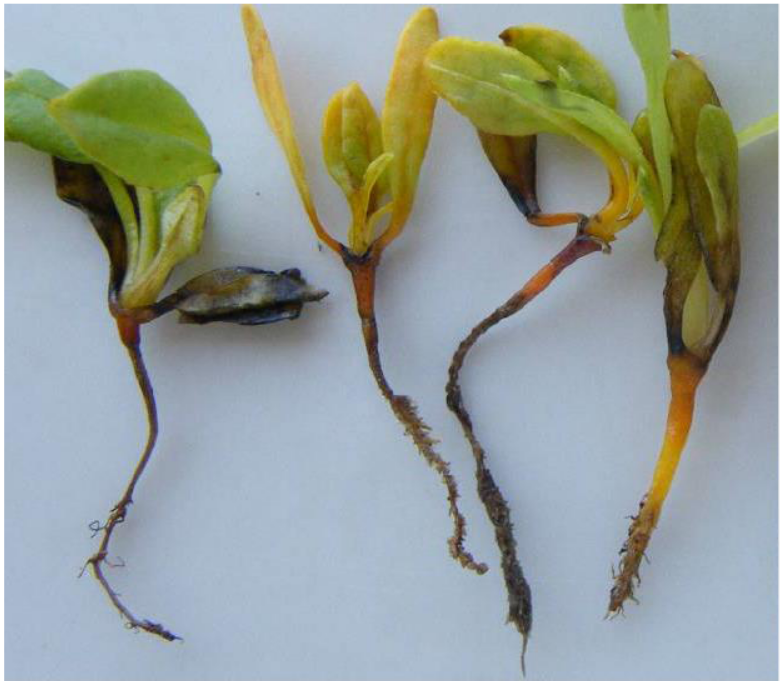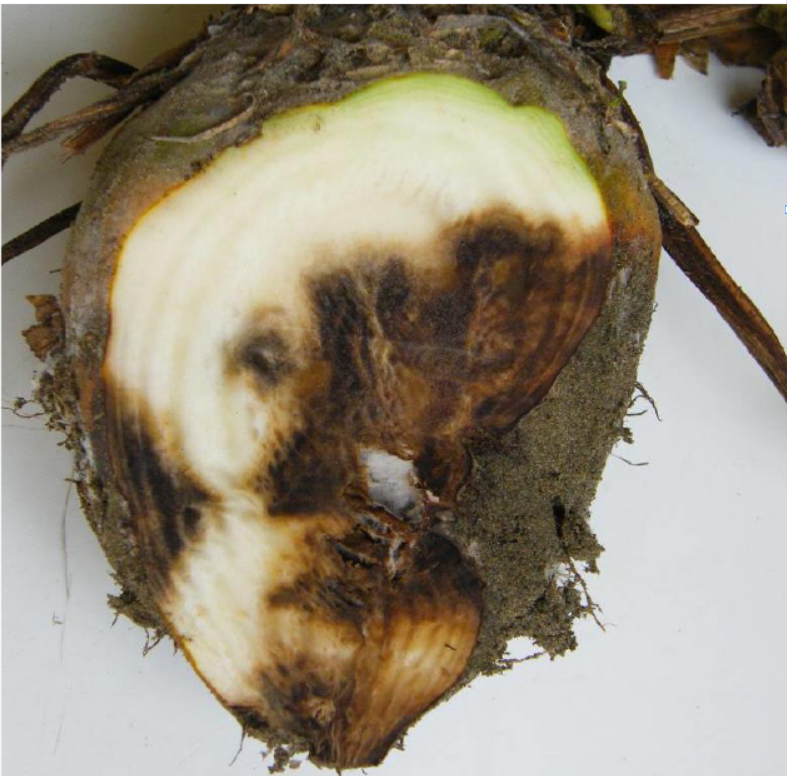Rhizoctonia
Rhizoctonia(damping off, foliar blight and bulb rot)
Summary

Rhizoctonia solani.
The soil borne fungus Rhizoctonia solani is a major disease in fodder beet, causing seedling damping off, foliar blight, and bulb rot, leading to leaf and plant death.
Identification
Infection by R. solani is difficult to differentiate in the field from other causes of damping off and bulb rot. Laboratory identification is possible.
Damping off: Early infection is characterised by dark lesions at soil level that increase in size to girdle the young stem. Plants then wilt, collapse and die.
Bulb rot: At and below ground level, the fungus invades through small wounds and cracks, progressing to cause large areas of dead
tissue. Plants wilt and can eventually die. The pathogen can progress to kill petioles and leaves. Sometimes, smoky-coloured fungal strands (hyphae) can be seen growing in internal cracks in the affected bulbs.
Importance
This is a major disease of fodder beet throughout NZ, reducing plant populations through seedling losses, rotting of bulbs and plant death.
Spread

Rhizoctonia solani.
R. solani commonly occurs in heavy, poorly drained wet soils. The pathogen survives in the soil as fungal threads (mycelium), resting structures (sclerotia) and in plant debris. Second year crops are especially vulnerable to infection. Cultivation and movement of soil from infected paddocks on machinery and livestock also helps spread the disease. Note: R. solani (also known as Thanatophorus cucumeris) has a wide host range, including all brassicas, potatoes, lucerne and carrots. Some strains also attack cereals but may not affect beet cultivars.
Management
Correct crop rotation is critical once the disease has been identified in a paddock. Selecting free draining paddocks will help reduce the risk.

